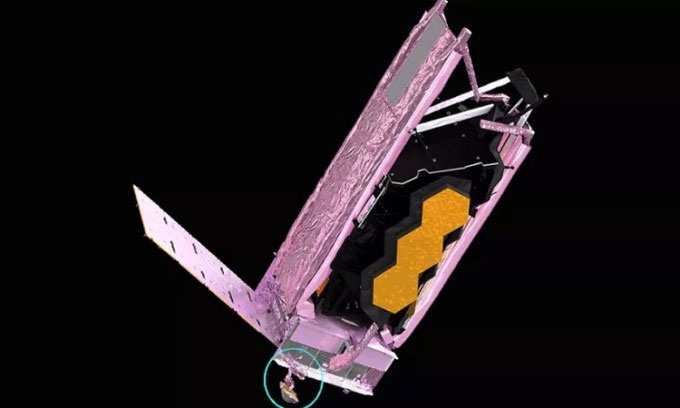NASA’s James Webb Space Telescope successfully deployed a crucial antenna on December 26, just one day after its launch into space.
The James Webb deployed its antenna, which houses a high-speed data disk responsible for transmitting the telescope’s observations of the early universe back to Earth. Webb was launched into space on December 25 by an Ariane 5 rocket from the spaceport in Kourou, French Guiana.

The antenna of the James Webb telescope after deployment on December 26. (Photo: NASA)
“This antenna will be used to transmit at least 28.6 gigabytes of scientific data from the observatory, twice a day,” NASA stated. “The engineering team successfully deployed and tested the movement of the antenna, a process that took about an hour.”
The $10 billion James Webb Space Telescope will study the earliest stars in the universe and many other unexplored mysteries. It is the largest and most powerful telescope ever launched into space. The deployment of the antenna is the latest step in a series of preparations for the space telescope to begin its deep-space observation mission. Currently, Webb is on a 29-day journey to a stable point in space known as Lagrange Point 2 or L2, located nearly 1.6 million kilometers from Earth. From this point, the space telescope will observe the universe in infrared wavelengths.
In addition to deploying and testing the antenna, the project’s flight controllers also activated the temperature and pressure sensors of the telescope for the first time. This sensor will allow them to monitor the temperature and structure of Webb in the coming days. Accurate measurements of temperature and structural loads are crucial for scientists and engineers during the mission, as the telescope is about to undergo one of the most stressful periods, which is the deployment of its massive sunshield.
The James Webb Space Telescope is an infrared observatory designed to conduct the most detailed observations ever, provided that the system remains cold enough. To ensure this, Webb will deploy a large, multi-layered sunshield the size of a tennis court. The first step of this process is expected to begin today, three days into the mission. Following this, the Webb telescope will perform a second trajectory adjustment as it approaches L2.

















































